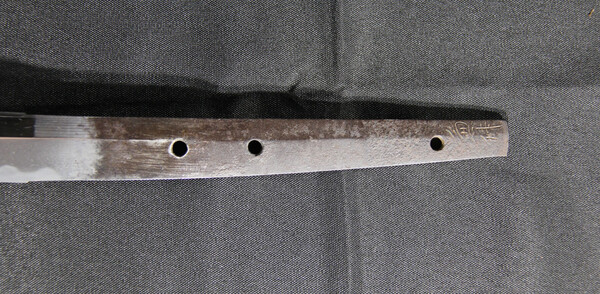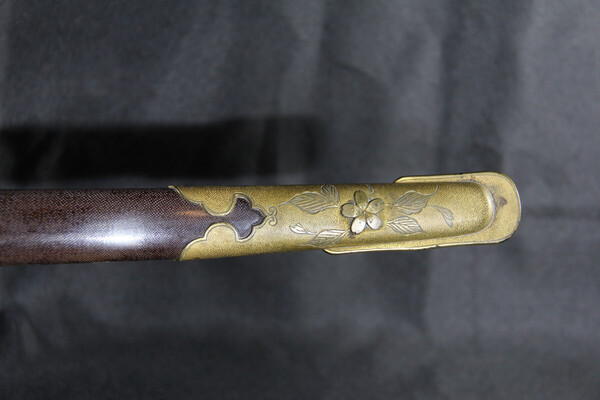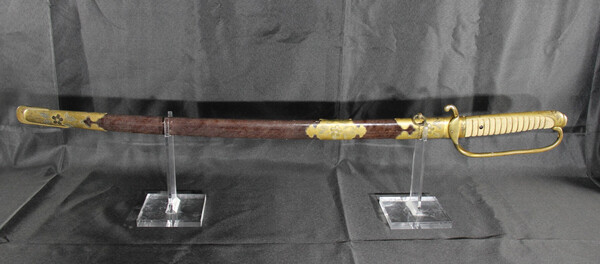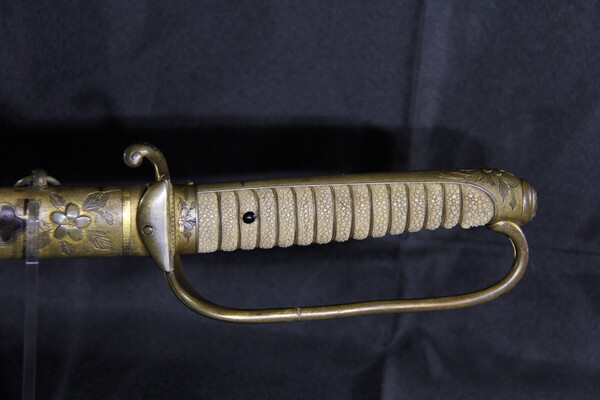
RobCarter3
Members-
Posts
88 -
Joined
-
Last visited
Everything posted by RobCarter3
-
Torio Hiromasa with removed stamp
RobCarter3 replied to RobCarter3's topic in Military Swords of Japan
The sword is finally in hand after USPS misplaced it for 5 days. I cannot see the outline of the stamp -- it was thoroughly removed. -
Torio Hiromasa with removed stamp
RobCarter3 replied to RobCarter3's topic in Military Swords of Japan
@Kiipu I should have the sword in hand tomorrow or Thursday and l’ll update with the requested pictures. -
Torio Hiromasa with removed stamp
RobCarter3 replied to RobCarter3's topic in Military Swords of Japan
I know that a gendaito by an Ehime smith would never have a Seki/Gifu commercial association stamp. I was about to buy the sword and then noticed a removed stamp and alarm bells started going off that this was a komonjo-type special where someone had applied a spurious Hiromasa mei to a Seki showato, despite all the other indications that the mei looked right, "yama" stamps check out, hamon is in Hiromasa's characteristic Bizen style choji-midare, blade is obviously water quenched, etc. You and the others are obviously correct that it's a removed star stamp. Very glad I came here and sought opinions from more experienced eyes. -
Torio Hiromasa with removed stamp
RobCarter3 replied to RobCarter3's topic in Military Swords of Japan
Closed the deal and the Hiromasa will be coming home with me. Thank you everyone for the information and advice. I was about to let this one go! -
Torio Hiromasa with removed stamp
RobCarter3 replied to RobCarter3's topic in Military Swords of Japan
Seller confirmed that the sword came from Japan, so the removed star stamp theory holds water and would explain everything else that we're seeing. I edited the thread title to be less provocative. -
Torio Hiromasa with removed stamp
RobCarter3 replied to RobCarter3's topic in Military Swords of Japan
Glad I posted instead of passing. I'll try to get some additional pics of both sides of the nakago from the seller. Any chance the brass habaki is wartime original? -
Torio Hiromasa with removed stamp
RobCarter3 replied to RobCarter3's topic in Military Swords of Japan
-
I have an opportunity to buy this sword signed Yoshū Hōjō-jū Hiromasa saku. Purportedly it's dated spring 1945 but I don't have any pictures of that side of the nakago. There are two matsuyama "YAMA" stamps on the spine of the nakago. When I was looking at the pictures on my phone, I thought it looked pretty good, other than a modern-looking brass habaki which I took as a sign that the koshirae is put together. Now that I've had a chance to look at the pictures on my computer, I'm deeply disturbed by what appears to be a mostly removed SHO stamp above the mei. What do you guys think?
-
Does anyone know this mon? It looks similar to the Maru Ni Hana Warabi (Bracken Flowers within a circle) posted here, but is oriented differently. It also looks similar, but not identical, to the one identified as "Horio" on this chart.
-
New variation of extended/patented ishizuke?
RobCarter3 replied to RobCarter3's topic in Military Swords of Japan
While there's certainly wear on the piece I don't think that accounts for all of the differences in shape. The drag is wider than the ishizuke on this one, with different terminations. Also, on others, the sakura leaf stamping is visible over the extended drag. On this sword, the extended drag is attached over the sakura stamping, suggesting a different method of construction. I still think it's a different part. I'm not trying to assign any real significance to it, I just thought it was interesting. I agree wholeheartedly that Dawson's Cyclopedia Edition is the bible. But I don't think Dawson's covers this particular quirk of Type 94/98 koshirae. -
New variation of extended/patented ishizuke?
RobCarter3 replied to RobCarter3's topic in Military Swords of Japan
I will be sending the sword off to have the tsuka restored. Reportedly this was picked up by a Royal Engineers officer after the Battle of Imphal, but there's no documentation so take the story as you will. As always, your honest impressions are appreciated. -
New variation of extended/patented ishizuke?
RobCarter3 replied to RobCarter3's topic in Military Swords of Japan
-
New variation of extended/patented ishizuke?
RobCarter3 replied to RobCarter3's topic in Military Swords of Japan
-
New variation of extended/patented ishizuke?
RobCarter3 replied to RobCarter3's topic in Military Swords of Japan
-
New variation of extended/patented ishizuke?
RobCarter3 replied to RobCarter3's topic in Military Swords of Japan
-
Greetings all, I acquired this Type 94 mounted sword recently with an extended ishizuke. Usually these have the same markings and the patent number "213917," associated with the Wakase shop in Tokyo. F & G say that "all examples found ... have identical markings." Well, here's one that's different -- in both shape and markings. One side appears to have an abbreviated version of the usual Wakase script, the other side is unmarked. There is no patent number. There are no stamps, markings, writings or logos on any of the other fittings, including the under the fuchi, other than some "roman numeral" style scratches on the seppa and tsuba.
-
Greetings all, This is a Toyokawa anti-rust kai gunto that I picked up last year because I wanted a representative stainless Type 97 with a sharkskin saya. Just got around to photographing it. One thing that's strange about this sword is the ito. It doesn't cover the whole tsuka, but ends about exactly one tape's width above the fuchi, leaving the wood core and sharkskin panels exposed. The ito is otherwise well-done, very tight, and with obvious age to it. I don't think it's appearance is due to shrinkage because the wrap changes to hiramaki over the menuki, and there's no indication that the menuki have moved. The mekugi-ana is also unobstructed and everything lines up well. The tsuka, saya (inside the throat), and fittings are all numbered "166," matching the nakago. So it appears that the sword was made this way. I could swear I've seen this exact same thing before on NMB but I can't find it. Maybe the tsuka was originally had a leather or canvas cover? Another thing about this sword is that someone has scratched writing into the habaki. One side appears to say 中村 "Nakamura," a common surname, but the other side is too deteriorated for me to try to decipher.
-
IJN 1883 Eleven-leaf w/ Muromachi Mino blade
RobCarter3 replied to RobCarter3's topic in Military Swords of Japan
-
IJN 1883 Eleven-leaf w/ Muromachi Mino blade
RobCarter3 replied to RobCarter3's topic in Military Swords of Japan
-
IJN 1883 Eleven-leaf w/ Muromachi Mino blade
RobCarter3 replied to RobCarter3's topic in Military Swords of Japan
-
IJN 1883 Eleven-leaf w/ Muromachi Mino blade
RobCarter3 replied to RobCarter3's topic in Military Swords of Japan
-
I wanted to share with you the last (and best) of my recent acquisitions. The sword is a IJN 1883 pattern officer's sword with the "eleven-leaf" guard variation. Other than the second suspension ring being missing (perhaps deliberately? w/ evidence of repair), the naval mounts are in great shape. The blade is suriage muromachi mino-den signed "兼升 " (Kanemasu). I bought the sword for the complete package in the naval mounts, but the blade in hand is quite beautiful and worthy of appreciation on its own. To my eye, the IJN 1883 in fighting kyu gunto form is the best-looking military pattern sword ever fielded, and I'm happy I was able to pick one up. The appropriate tassel is in the mail. A few quick questions -- This pattern was in use for 54 years. Are there any signs or tells that date a sword more precisely within that time period? Also, I see a lot of kai gunto offered for sale with shrunken, peeling, and deteriorated sharkskin or rayskin sayas. Is this because they were neglected in hot attics for decades, or do I need to take some kind of proactive action to keep the saya preserved in its current condition?










































